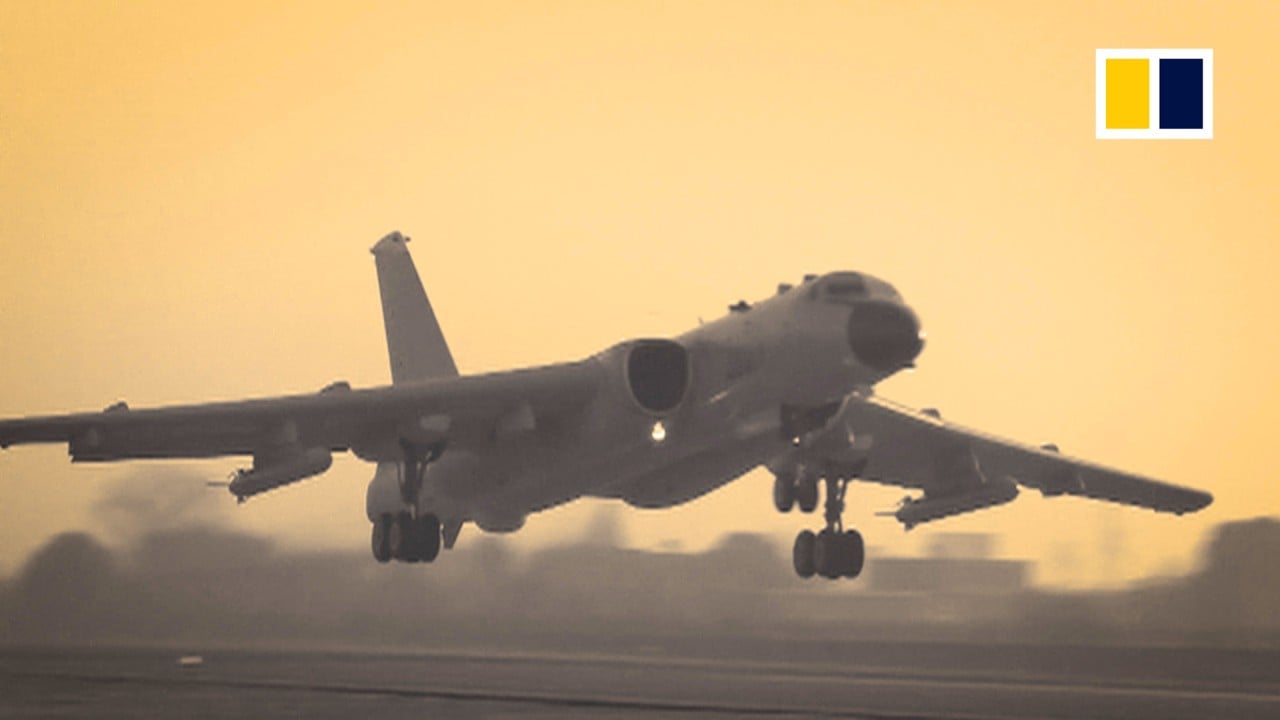
Is China military trying out new combat tactics with J-16 sorties?
- Observers point to increased presence of early warning and electronic warfare aircraft in combination with the fighter bomber
- Strategy inspired by the US military connects and shares information between the latest combat platforms and older warplanes
Military observers have noted an increased presence of the KJ-500 airborne early warning and control system (Awacs) and different generations of fighter jets, along with the multi-role J-16, during the PLA’s numerous approaches towards the self-ruled island in recent months.
Why PLA’s latest Taiwan sortie suggests it is expanding its range
The PLA has been conducting island encirclement exercises since the 2016 re-election of Taiwanese president Tsai-Ing-wen from the independence-leaning Democratic Progressive Party. Beijing regards Taiwan as a renegade province that must be reunified with the mainland, by force if necessary.
Lu Li-shih, a former instructor at the Taiwanese Naval Academy in Kaohsiung, said the aircraft groupings showed the PLA was trying out a new tactic of cooperative and engagement capability (CEC) – inspired by the US military – which connects and shares information between the different combat platforms, with each one performing different roles during an engagement.
“In the PLA’s CEC scenarios, the KJ-500s may take responsibility for finding hostile targets, and then share the information with the J-16s to let the latter hit enemies because the Awacs aircraft themselves do not carry any weapons,” he said.
“Those incursions made by the KJ-500, J-15 and other aircraft around Taiwan appear to just have the island as their key target, but they mean the PLA is now able to challenge the US’s archipelagic defence strategy under its Indo-Pacific policy,” Lu said.
“It is necessary for the US to help Taiwan enhance its electronic warfare and electromagnetic spectrum operations capabilities … to prevent Beijing’s further military expansion in the region.”
Xi vows to crush attempts to thwart ‘complete reunification’ with Taiwan
Macau-based military expert Antony Wong Tong said the J-16 was specifically designed for a possible Taiwan attack, but needed to fight alongside the PLA’s current sole active J-20 stealth fighter and the J-10C lightweight fighter jet.
“The J-16 was developed to fill the gaps and any blindness left by the J-20s and other older generation fighter jets in dogfights,” Wong said. “The heavyweight fighter is a 4.5 generation jet intended to rival the US’s F-35A Lighting II, with a unit price of up to US$80 million.”
Wong said it was clear from academic journals published on the mainland that the PLA navy was already applying CEC principles between its most advanced 12,000 tonne Type 055 stealth guided missile destroyer and its smaller, less sophisticated Type 052D guided missile destroyer.
The J-16 – which has a 12 tonne payload, coming close to the US F-22 – is based on a number of different fighter jets, including the Russian Su-27 and Su-30, as well as China’s indigenous fourth generation J-11B. Like the J-20 and the J-10C, the J-16s are equipped with home-grown WS-10B engines, making them suitable for mass production.

01:01
PLA propaganda video spotlights new war planes
The multi-role J-16 fighter bomber made its secret maiden flight on October 17 2011, nine months after the PLA’s only active stealth fighter jet – the high-profile J-20 Mighty Dragon – was unveiled while then US defence secretary Robert Gates was meeting former Chinese president Hu Jintao in Beijing on January 11 of that year.
According to the latest edition of Chinese military magazine Ordnance Industry Science Technology, development of the J-16 began in the early 2010s, as the US air force unveiled upgrades to its F-15C/D Eagle fighter jet – key rival of China’s J-11B – to equip it with a computer-controlled active electronically scanned array (AESA).
The new technology, with its high jamming resistance to allow ships and aircraft to radiate powerful radar signals, doubled the vision and strike range of the Eagle, while retaining its stealth capability. It also pushed forward development of China’s J-16 based fourth generation aircraft platform, with almost all US fighters in the Asia-Pacific region equipped with the powerful technology.
In an interview aired by state broadcaster CCTV in March, PLA flying instructor Wang Songxi described the J-16 as a warplane “without flaws” because of its ability to carry a wide range of weapons, including air-to-air, air-to-ship and air-to-ground and radar-guided beyond-visual-range missiles.
In the same programme, J-16 pilot Bai Long highlighted its stealth capability. “The greatest advantage of the J-16 is its ability to find the enemy and take pre-emptive strikes, but the rival would not be able to respond, just because of its high invisibility,” he said.

